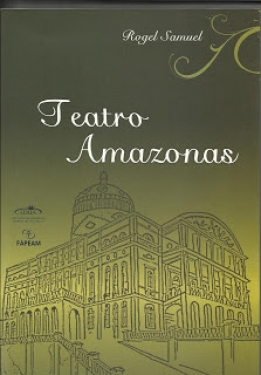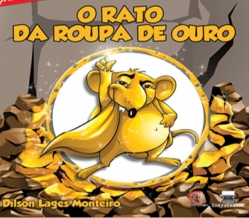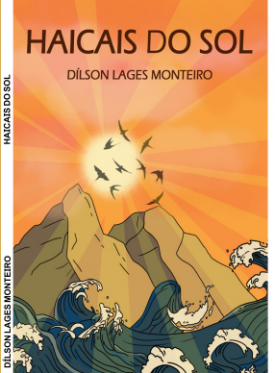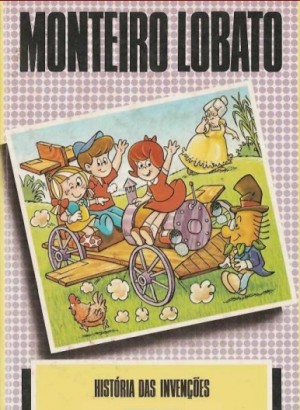AJURICABA
 Por Rogel Samuel Em: 08/12/2021, às 16H42
Por Rogel Samuel Em: 08/12/2021, às 16H42

Ajuricaba habitara o rio Hiiaá, na margem esquerda do Negro, entre o Padauari e o Aujurá, no distrito de Lamalonga. Quando foi salvar seu filho caiu na emboscada e feito prisioneiro da Coroa, em 1729, que o queria vivo para o supliciar com castigo e morte. No caminho Ajuricaba solta o grampo que o prende e, com mão e pés algemados começa a fazer a matança dos soldados portugueses antes de precipitar-se de vez nas águas escuras do rio Negro, que amaldiçoou. Por isso as águas daquele rio são estéreis, não têm quase peixe. Mas logo depois, Belchior Mendes de Moraes passou pelas armas 300 malocas, matando em sacrifício mais de 28 mil índios das margens do rio que passa a chamar-se de Rio Urubu. E balesteiros, sob o comando de um padre de nome piedoso - Frei José dos Inocentes, depois nome de rua de puta na cidade de Manaus - espalharam as roupas contaminadas que disseminaram uma epidemia que matou 40 mil índios arruinados de varíola, que é uma doença infecto-contagiosa, e virulenta, que apodrece o corpo ainda vivo com erupções de pus e raquialgia, pápulas, pústulas, cegueira e agonia de uma morte bacteriológica lenta, os cadáveres sendo devorados pelas moscas, piuns, carapanãs, mutucas, cabo-verdes, potós, catuquis, marimbondos, suvelas, besouros venenosos e principalmente formigas. A saúva antropófaga devora um cadáver em 20 minutos. Na construção da Estrada de Ferro Madeira-Mamoré, em 1908, os mortos largados no caminho para serem enterrados (30.430 operários internados no Hospital da Candelária) quando a locomotiva voltava só encontrava ossos limpos comidos e limpos pelas saúvas. E também a formiga-de-fogo, a saca-saia, a lava-pés, a manhura, a cabeçuda, a taioca, a carregadeira, a táxi, a tracuá e a pior, a tocandira, peluda, enorme, venenosa, uma única picada basta para abater um homem, com fortes dores e febre - e era usada pelos índios na iniciação masculina dos garotos, que tinham de enfiar o braço numa cumbuca cheia de tocandiras e agüentar e provar que eram machos. E a formiga roceira, e a cortadeira, e a guerreira, a correição. Von Martius descreveu populações inteiras fugindo das formigas. As açucareiras eram capazes de fazer recuar um exército!
Uma semana depois da morte da esposa do seringueiro Laurie Costa e imediato ao morticínio da aldeia Caxinauá pelos guerreiros Numas, Pierre Bataillon arregimentou a tropa de guerra, sob o comando de João Beleza, para fazer frente à invasão. Logo os efetivos puseram-se em marcha para perseguir o inimigo. A possibilidade de um ataque frontal por parte dos Numas não foi descartada, e fizera-se um adestramento de emergência pois que a maioria dos homens nunca estivera sob fogo e nordestinos quisessem apostar no êxito das facas. A guarnição do Manixi era cerca de 150 homens armados de revólveres ingleses Webley II calibre 45 e carabinas americanas Winchesters 94 de repetição de 8 cartuchos calibre 44. Vestiam-se de botas, cartucheiras, calças e coletes de couro cru, à prova de espinhos e de cobras. Os mantimentos seguiam em mulas e canoas. Recrutados, armados, mateiros caingangues rápidos localizaram o rumo do acampamento Numa e o efetivo de uma brigada avançou rapidamente em lanchões, atacando repentinamente em incursões rápidas e conseguiram vitórias expressivas, matando alguns índios e mantendo os Numas sob fogo cerrado dentro da floresta. Mas os Numas fugiram, desapareceram.
Ajuricaba lived on the Hiiaá river, at the left bank of the Rio Negro between the Padauari and the Aujurá in the district of Lamalonga. When he went to rescue his son, he fell into an ambush and was taken prisoner by the Crown in 1729, which wanted him taken alive to torture him with punishment and death. On the way Ajuricaba got loose from the clasp which was fastening him and with manacled hands and feet started killing Portuguese soldiers before suddenly hurling himself into the dark waters of the Rio Negro which condemned him. Because of that the waters of this river are sterile, there are hardly any fish in them. But soon after, Belchior Mendes de Moraes went on a shooting rampage of 300 Indian villages, in a sacrificial killing of twenty-eight thousand Indians on the shores of a river which came to be known as the Rio Urubu. Artillerymen under the command of a priest with a pious name – Father José dos Inocentes, later the name of a street in the red-light district of Manaus – dispersed contaminated clothing that disseminated an epidemic that devastated forty thousand Indians with smallpox, an infectious, contagious disease whose virulence rots the body still alive with eruptions of pus and rachialgia, papules, pustules, blindness and the agony of a slow bacteriological death; the corpses are devoured by flies, gnats, giant mosquitos, matuca flies, beetles, rove beetles, horseflies, catuqui gnats, wasps, suvelas, venomous beetles and mainly ants. Man-eating umbrella ants can devour a cadaver in twenty minutes. On the construction of the Madeira-Mamoré railroad in 1908, corpses were spread out on the road to be buried (30,430 workmen interned in the Candelaria Hospital) and when the locomotive returned there were only dry bones, cleaned and eaten by umbrella ants. Also, fire ants, swarm ants, stinging ants, manhura ants, sauba ants, red-brown ants, worker ants, tree ants, tracuá ants and the worst, the tucandera ant, furry, enormous, poisonous, a single bite is all it takes to kill a man, with acute pain and fever – and it was used by the Indians in the male initiations of boys, who had to stick their arm in a gourd full of tucanderas and endure to prove they were men. And the leaf cutting ant, the sauba, the warrior ant and the army ant. Von Martius describes whole populations fleeing from ants. Sugar ants could make an army retreat!
A week after the death of the wife of the rubber tapper Laurie Costa and immediately right after the massacre of the Caxinauá village by Numa warriors, Pierre Bataillon formed a military unit under the command of João Beleza to confront the invasion. Then regulars began to march in pursuit of the enemy. The possibility of a frontal attack by the Numa was not dismissed and an emergency drill was carried out since the majority of the men had never been under fire; they were north-easterners who swore by the success of their knives. The Manixi garrison had about 150 men armed with 45-caliber English Webley II revolvers and Winchester 94 American repeating rifles of eight 44-caliber cartridges. They were dressed in boots, bandoliers, rawhide breeches and vests to withstand thorns and snakes. Equipment followed on mules and canoes. Recruits, armed men, swift Caingangue bushmen determined the location of the Numa camp and active troops advanced quickly in barges attacking repeatedly in rapid incursions and achieved significant victories, killing some Indians and keeping the Numa under fire inside the forest. But the Numa fled and disappeared.
(O AMANTE DAS AMAZONAS)











